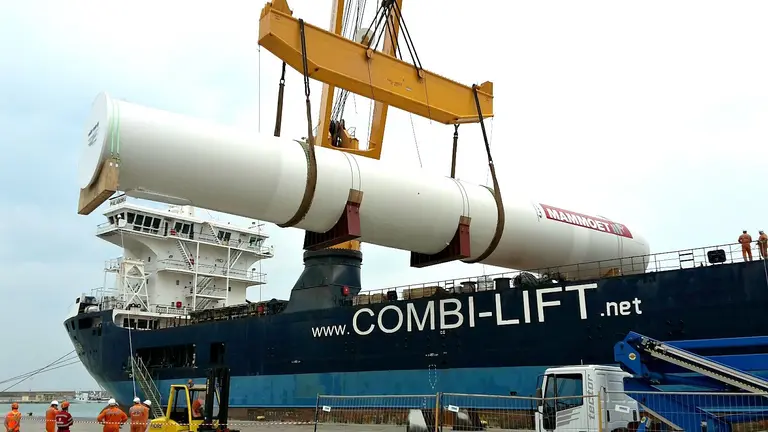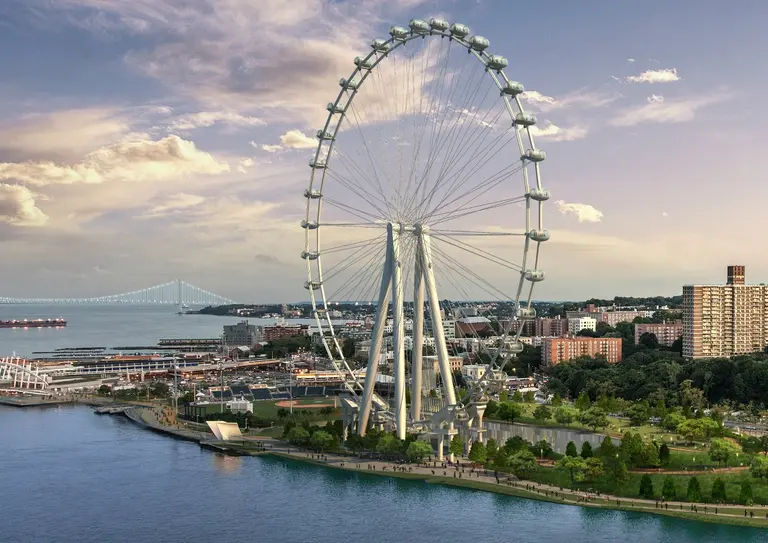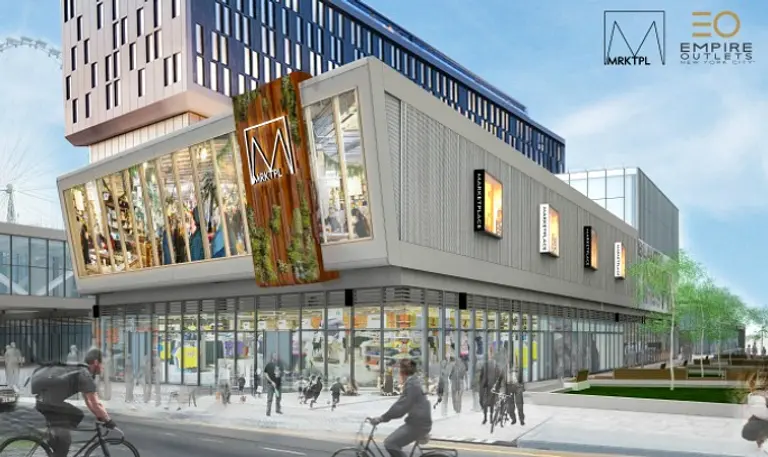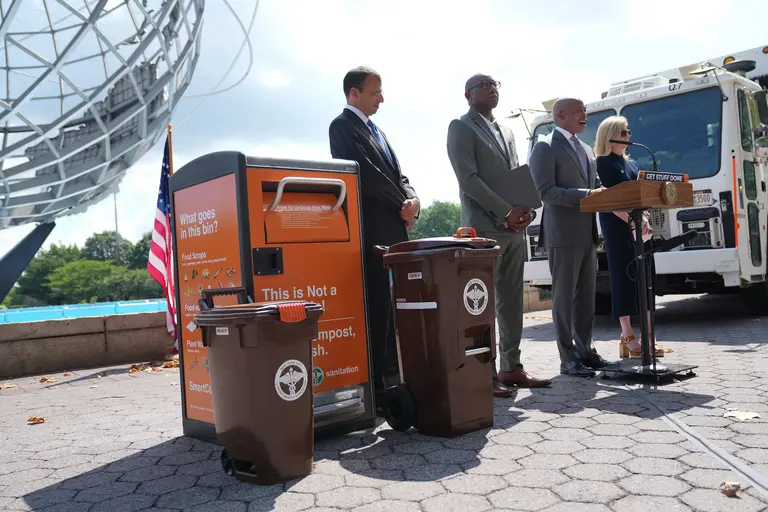Scraps from ill-fated New York Wheel will go up for auction next month
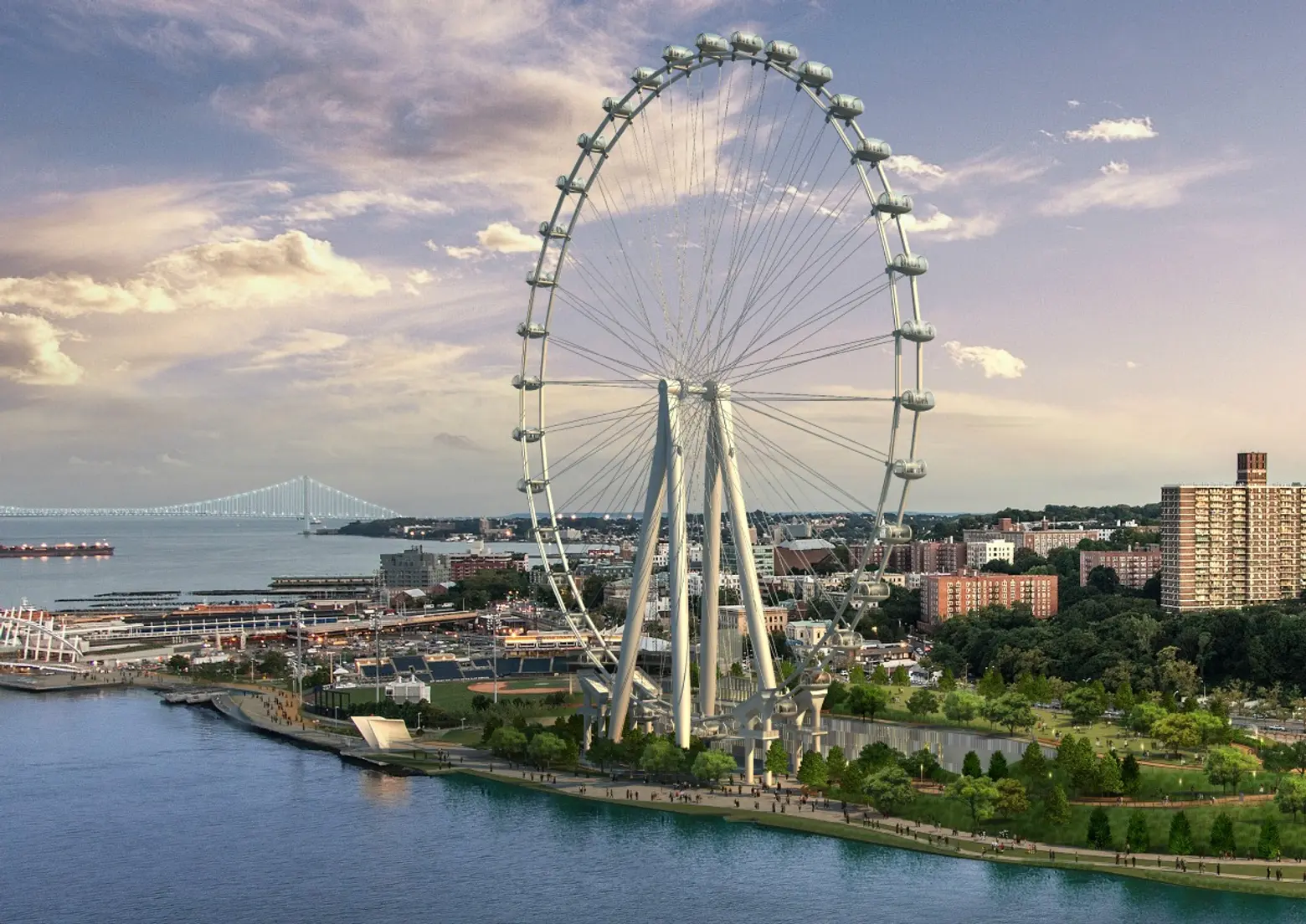
The project to build the would-be world’s tallest Ferris wheel in Staten Island was called off in October, after nearly a decade of delays and $450 million in investment. While the proposed 630-foot New York Wheel is officially dead, parts of the ill-fated attraction will go up for auction next month, the New York Post reported. Items up for sale include the wheel’s legs, valued at $9.2 million, and drive towers, for $3.3 million.
Construction of the project, which was being privately funded and had originally been expected to open in October 2016, was halted last May when the contractor, Mammoet-Starneth, walked off site over unpaid bills. The developer later filed a federal lawsuit that claimed halting work put the revitalization of Staten Island at stake.
As 6sqft previously reported, Mammoet-Starnet had attempted to auction about $68 million of the parts made for the wheel as it was costing them $700,000 per month to store them. The bankruptcy court ordered the New York Wheel to pay nearly $2 million in storage costs.
If there are multiple bidders, the auction will take place on Jan. 16 in Delaware-based law offices of Richards, Layton & Finger, the Staten Island Advance reported. Bidders who show they have the money to purchase the parts must submit a bid by Jan. 11.
Other items up for grabs include the wheel’s frame braces for $3.4 million, cable spokes for $4.4 million, and 36 capsules for $23 million, according to documents filed in Delaware Bankruptcy court. And 9,147 tons of steel could also be sold for scrap metal. A third party will oversee the auction and the courts will then determine whether Mammoet-Starnet will receive the proceeds from the auction, according to the Staten Island Advance.
The project was initially projected to cost $250 million, but the estimate jumped to nearly $1 billion, according to the city’s Economic Development Corporation. The Wheel’s developers had asked the city to provide tax-exempt bonds to help get work restarted, but Mayor Bill de Blasio refused, saying that he didn’t think the project was economically viable.
[Via NY Post]
RELATED:

